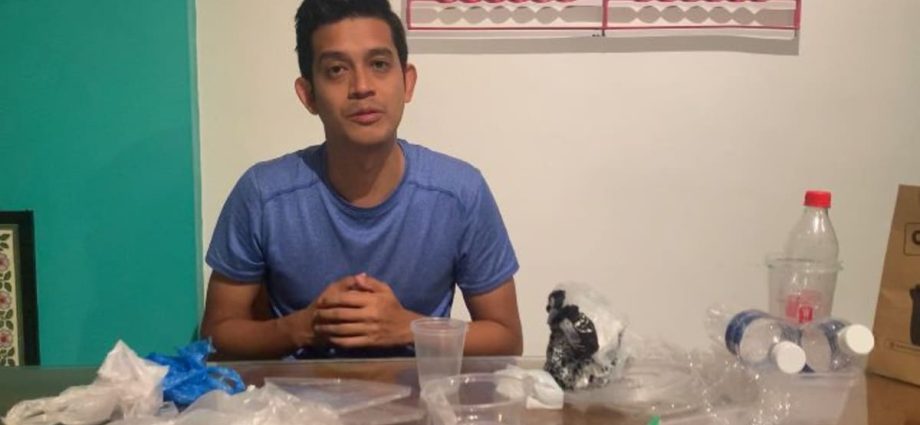
But at new hawker centres, disposables are not allowed to be used for dine-in meals. This also applies to existing hawker centres that use common crockery and have centralised dishwashing services under the Productive Hawker Centres programme.
At existing hawker centres not under the programme, new stalls are not allowed to provide disposables for dine-in meals.
“It’s very easy to … mindlessly use things especially when they come for free,” said Ms Lam. “Nobody really thinks much further about taking something that’s provided for free.”
Bringing my own water bottle also had its rewards, as I found out.
A number of establishments around Singapore offer discounts if you bring your own bottle, bag or container. I enjoyed a small discount with my usual iced coffee at a cafe near the office.
But there was one aspect of going plastic-free I’d totally forgotten about – packaging.
It just so happened that the week I tried to go plastic-free was the same week my online orders arrived, with bundles of new clothes wrapped in layers of plastic.
According to WWF Singapore, close to 200,000 parcels are delivered daily in Singapore.
Since most products bought online are packaged with an abundance of plastic, the only way to cut down on waste is to rethink my shopping habits.
Ms Khee said that industrial producers “set the context” of how consumers can behave and have a much bigger impact than individual consumers.
“The reason why we are focusing on individual consumers is in the hope that if there is enough education and awareness that bigger corporates actually set the context of how consumers can behave, then consumers will be more ready and willing and educated to take the conversation back to the corporates,” said Ms Khee, who is a social media manager for local boardgame publisher Origame.
“We have to be a little bit clearer that it is not primarily individual action, but everybody else in the value chain of all these transactions has to be responsible for the choices that they offer to the consumers.”
UNAVOIDABLE AT TIMES?
But as I found out, plastic waste is unavoidable in some circumstances.
For instance, I could not avoid the little polypropylene containers that my disposable contact lenses come in.
Halfway through my plastic-free week, I contracted dengue fever. The blister packs containing my medication also contained plastic and there was simply no getting around that. The same was true for the COVID-19 test kit that I used.
“In medical settings or for hygiene like contact lens cases, the material is used for a reason,” said Ms Lam. If other materials were used instead, it would drive up costs for consumers, she added.
“If we package things in glass, there could be breakage and that also creates waste,” she said. “It’s not such a simple matter of plastic equals bad.”
As my seven “plastic-free” days drew to a close, I was left with contact lens cases and plastic packaging from various sources. I hadn’t been able to completely eliminate plastic, but I definitely managed to cut down on my use of it.
While some types of plastics are unavoidable, they can be repurposed or recycled. For example, I reused the plastic packaging from my online shopping purchase as a bin liner. There are also local programmes where contact lens blister packs can be recycled.

